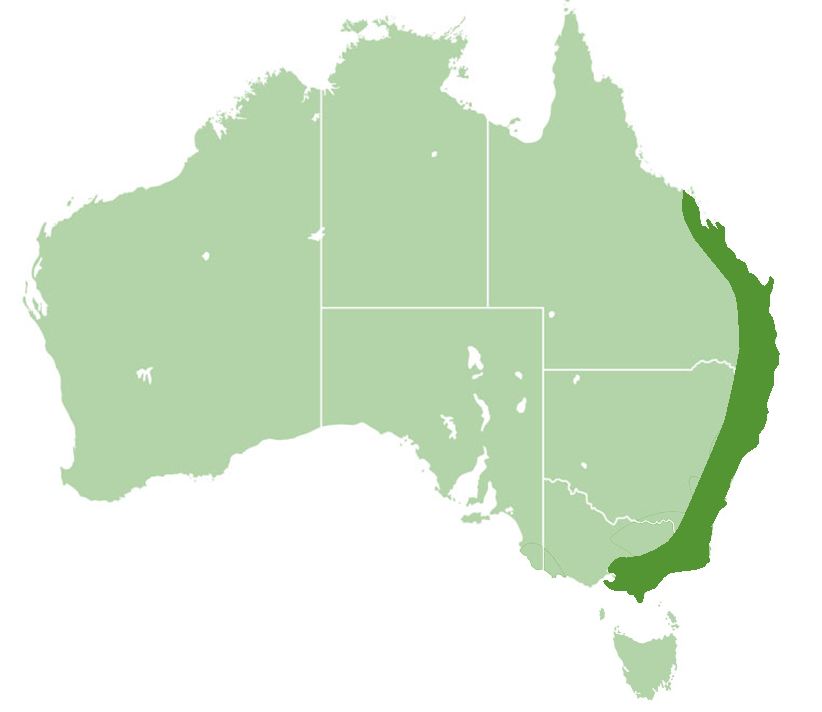Greater Sooty Owl
Tyto tenebricosa
Greater sooty owls have heart-shaped facial discs with dark eyes and gets its name from its characteristic sooty colour. The upper parts of the bird are sooty-black with fine white spots on the head. The underbelly is greyish-brown, paler towards the belly with small spots and mottling. The toes are dark grey with large black talons and the bill is feather-covered almost to the tip.
Females are on average 47cm long and 1.0kg in weight and are substantially larger than males, which are on average 40cm long and 650g. They also have larger feet and beaks than males.
Their call is a long descending scream that can last up to two seconds and is known as the ‘bomb whistle’. They are strictly nocturnal, roosting in tree hollows, caves or thick foliage and tree ferns, and are cryptic and shy.
What they eat
The greater sooty owl is a predator which preys on arboreal mammals such as greater gliders, sugar gliders, and ring-tailed possums. They also take ground mammals including bandicoots and native rats. They also occasionally take birds, bats, and insects.
Breeding
The sooty owl is a monogamous bird that forms life-long pairs. The breeding season is from March through to September, with a clutch of 1-2 eggs being laid in large tree hollows The incubation period is five to six weeks and chicks hatch with dull grey down. The female cares for the eggs and the chicks but both the male and the female provide food from the late nestling stage until the young fledge at three months of age. Fledglings remain dependent on their parents for up to six months after fledging as they learn to hunt.
Location
In Australia, the greater sooty owl lives in deep, wet eucalyptus gully forests in southeastern Australia from Victoria to Queensland.
Threats
Clearing and fragmentation of greater sooty owl habitat, which in turn affects their abundance of native prey and breeding hollows, are presumed to be the main threats to the species.












